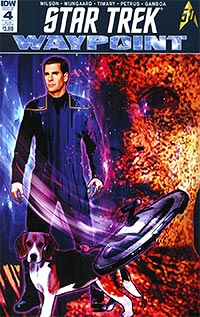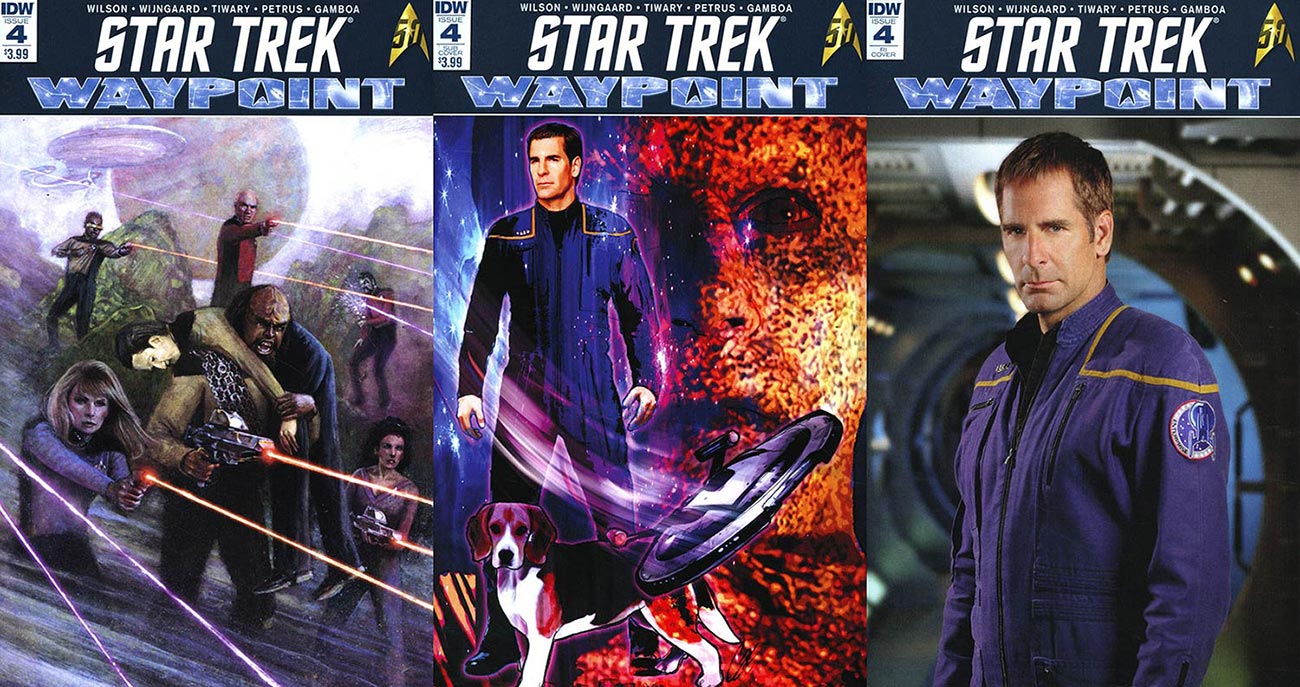I don’t think Enterprise got the respect it deserved.
I mean, it was a bit of a slow burn, but it found its pace in the third season. Then it was direfully affected by dwindling ratings and a change in network leadership, then… well, that was that.
I liked it and that’s the great thing about IDW’s Waypoint series; it gives fans a chance to go back and enjoy the stories that could have been and focus more on the positive attributes of this show and other iterations of the franchise.
For one thing, I really enjoyed Jonathan Archer – what a great character and the fact that he is so integral to the historical foundation of the Federation is wonderfully reinforced by writer Vivek J. Tiwary in the first story of this book, titled “The Fragile Beauty of Loyalty.” It’s a bit of a clunky title, but speaking as someone who’s never been good with titles himself, it’s something I’m willing to overlook and forgive.
However, the value of this story is in the wonderful capture of Archer’s character background. Tiwary takes a very canonical approach to the legend of Archer and ties it in so neatly to the short-lived television show. In fact, I would venture that this is exactly what editor Sarah Gaydos is looking for in a Waypoint story to illustrate and keep in tune with the fabric of the Star Trek license. I hope this is an example shown to hopeful writers. I know I learned something from it.
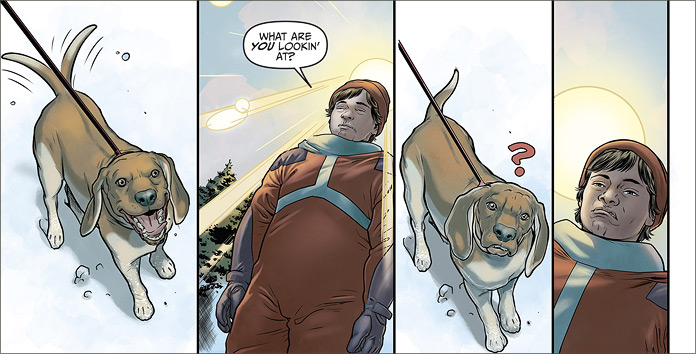
This is an excerpt of Archer’s childhood. There were frequent mentions of Archer’s father and references to his childhood in the show and this is a direct relation back to that aspect of Enterprise. It’s also relevant in that we see Archer as the target of a Suliban assassination in his past – deadly agents of the Temporal Cold War. It’s definitely a story that makes a fan go “Ahh, I see what they did there!” – and is a really entertaining slice of a story that could have existed in between episodes.
The art of Hugo Petrus provides a thoroughly enjoyable representation of Archer – young and old – along with a faithful canine companion. In my opinion as a dog-lover, Porthos didn’t get enough love in the show, but it’s to Tiwary’s credit that he manages to create such a heart-warming story with such a minor character and ties it into the canonical fabric of the show. It’s certainly something that Enterprise – and dog-lovers for that matter – will enjoy.
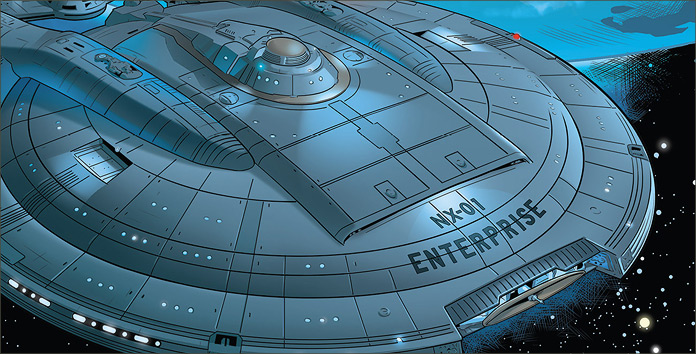
The second story in this issue is Scott Bryan Wilson’s Next Generation tale, “Mirror, Mirror, Mirror, Mirror,” which suffers a bit from the opening page.
Worf smelling flowers isn’t a good lead-in image. Let’s face it: while it may be an incongruity to the character of a Klingon we’ve come to love, it really fails to deliver anything more than establishing shock value for just a frame. Afterwards, the odd nature of the image is lost with the rest of the story.
Dr. Crusher and Worf beam down to a planet to investigate the curative properties of a flower that can help with plague on a Federation planet. In the process of investigating the flower, they discover an artifact – a mirror – that can replicate anything in its reflection.
The story wasn’t exciting; I think that’s the most relevant criticism that I can levy against it. I can’t fault its structure, but I have to say that it was somewhat staid. After all, a mirror that can recreate real objects? It’s just my opinion, and I could be off-base, but I just found this a tad dull. It fell somewhat short of delivering a punchy and entertaining short story, which is what an anthology is supposed to do.
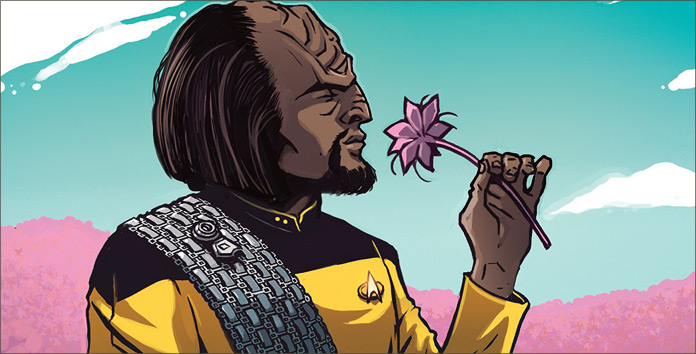
I found it vague in terms of resolution. After all, leaving what happened to all the reflections afterwards to the very last frame understated the story resolution. Also. the mirror’s sentience was only hypothesized, yet the last frame indicates that the mirror did resolve all the duplicates which confirms its sentience and demands a greater response than simply leaving it alone with a BEWARE sign on the front lawn. I’ve read and re-read the story over and over and I’m still stuck with the same opinion: this story left me with a sense of dissatisfaction.
However, I found the artwork satisfactory. I am not overly familiar with Caspar Wijngaard’s work so this was a first introduction to me. It was serviceable and solid and I can’t criticize it too much other than more detail to the backgrounds would be appreciated. It delivered a solid presentation of the story and that’s what art is supposed to do.
- Turning our attention to the covers, I have to say that I was extremely fond of the subscription cover by Cat Staggs (center), featuring a stylized depiction of Archer, Porthos, and a Suliban foe. It was dynamic and had a 1980’s flair reminiscent of a restrained Bill Sienkiewicz that I found extremely palatable. I enjoyed this cover immensely and wish they would have stuck with this one for all three variants.
- I found the regular cover by Zachary Baldus (left) was a little too faded and imprecise. When you also consider that it really didn’t have anything to do with the interior story, I found that to be a little misleading as well. The bridge crew of the USS Enterprise firing phasers into what looks like a fog was a little vague. At least, that’s my opinion.
- The retailer incentive cover is a photograph of Scott Bakula playing Captain Archer. While Bakula is a perfect choice for this role, I just am not a fan of photographs on a comic cover. I’d love to get the rationale for this choice, but I’m guessing it’s just a reflection of how good-looking Scott Bakula is in relation to the rest of us! It’s a good cover, but it’s not a good comic cover.
I’ve mentioned this in the past, but Waypoint is still growing. Anthology series are rare but they used to be very popular in the 70’s and 80’s. I think it’s admirable that IDW is resurrecting the tradition which makes this a book that I feel very invested in.
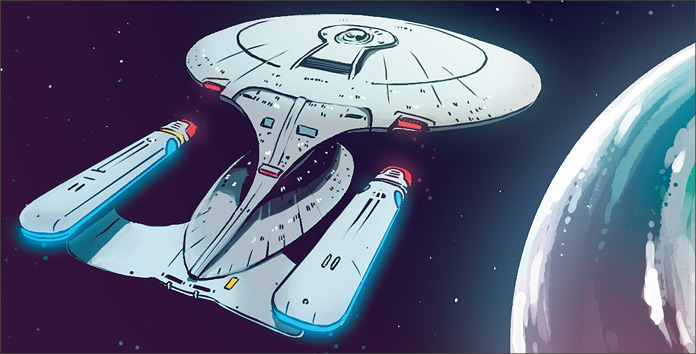
I want this to succeed, not just because of its Trek nature but because of the classic format. It’s getting better, and just like Enterprise, it’ll find its stride.

